Set Review ➟ 42105 Catamaran
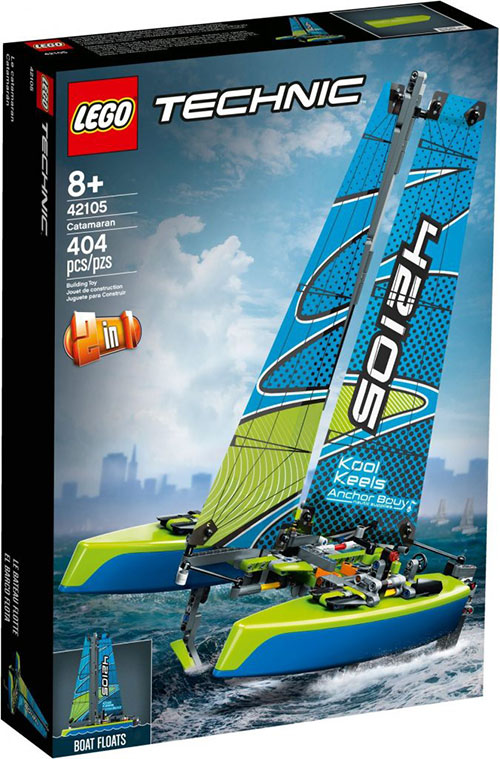

Technic sets typically portray cars and construction vehicles: cranes, bulldozers, excavators, and some farm machinery. Then there is the occasional helicopter or plane. Helicopters are more abundant, probably because they tend to have more and more complex moving parts. Finally, over the last few years there have been a number of boats. The 40th anniversary of Technic brought a very nice 42064 Ocean Explorer (with a helicopter and a crane!). 2018 saw 2 water vessels: a hovercraft and a racing yacht. However, none of those models could float.
This year started off with a nice power boat that could race convincingly over a table, but was no fun in a bathtub. 42105 Catamaran brings a change in this paradigm. Prominently displayed on the box are the words: BOAT FLOATS
So let’s dive straight in and get to the most intriguing part of this set: the floats.
Each float is 36 studs long, 7 studs tall and at its widest point, 7 studs wide. There is a hole that runs straight through the hull and is 1 stud wide and 3 long. The hole is placed slightly to the rear of the hull coinciding with the centro of gravity.


On either side of the hole there is a row of three attachments points and there are another 3 attachment points at the rear of the hull.
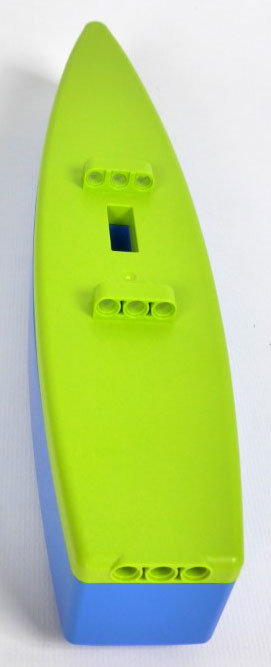
Each hull is made up of 2 parts. This allows the hull to have a nice blue and green colour combination. The two parts can be separated easily, but this does not affect the floatability of the hull. LEGO does recommend separating the two parts after using the boat in water so you can more easily clean it.
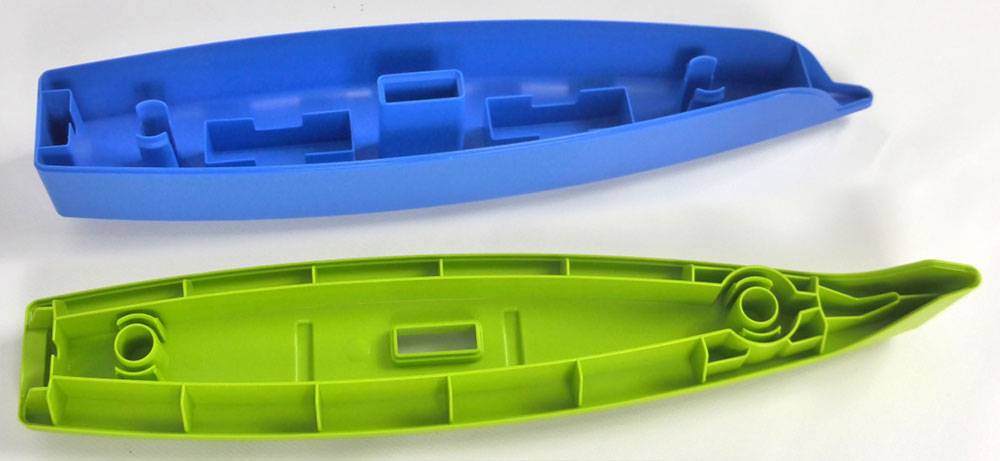
So how are the hulls used in this set?
The set comes with a single instruction book for the main model. Instructions for the secondary model, depicted on the back of the box, will become available after the set has been officially released.

In addition to the traditional LEGO Technic parts in the set, there is also a plastic sheet with sails.
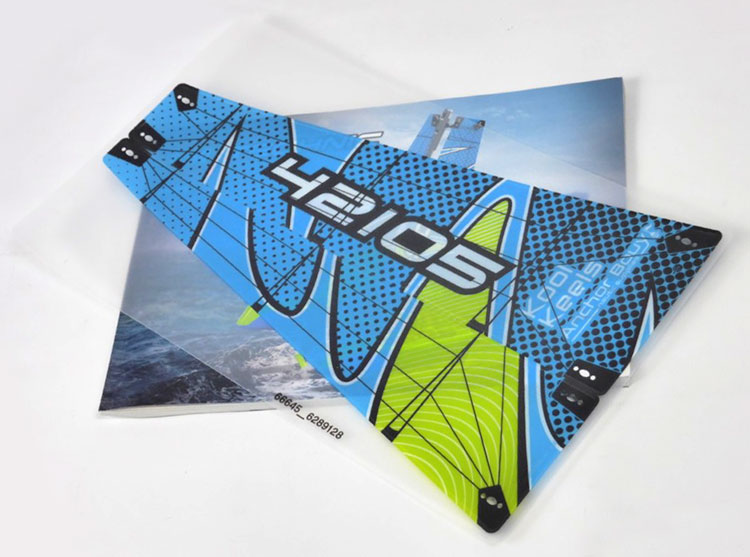
The plastic is flexible, but strong and comes with little holes to attach the sails with the use of pins. The quality of the plastic is really nice and the printing looks virtually the same from both sides.
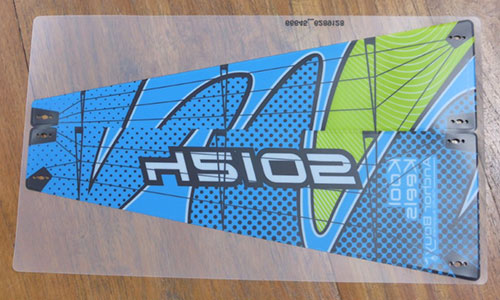
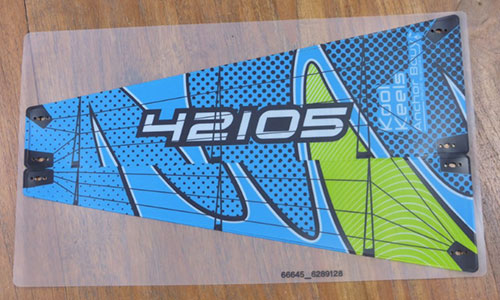
The catamaran is built roughly in three parts. First up you build onto one of the floats. Then you build the central part of the catamaran with contains the controls for the sails, and finally you build a mirror image of the first float to complete the model.
The floats contain a mechanism that allows you to lower and raise a keel to improve stability


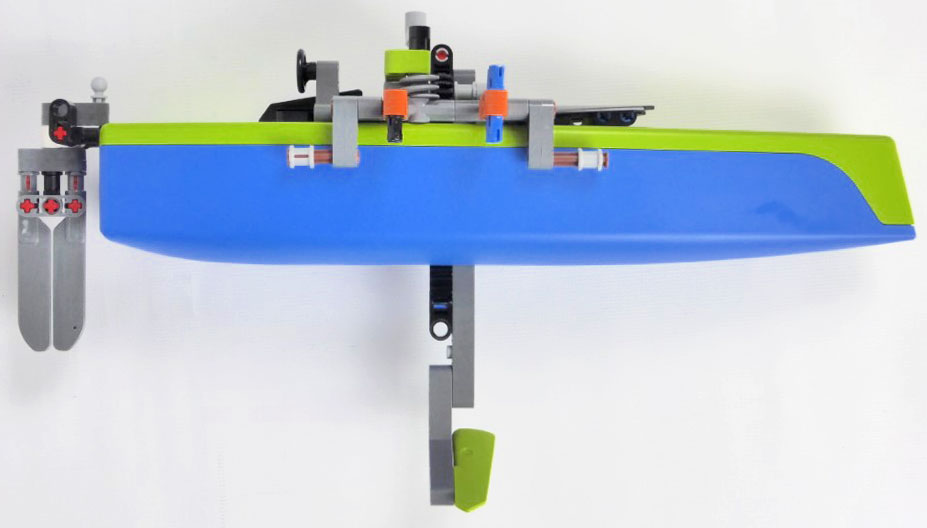
The central part of the catamaran contains the mechanisms to control the sails and also the rudders.

The sails are controller with a combination of liftarms, axles and links. The mechanism has quite a bit of friction, which in this case is a good thing as it will allow you to fix the sails in a position when you take it out to sail.
In the following picture you can see where each mechanism passes through the bottom of the central platform.
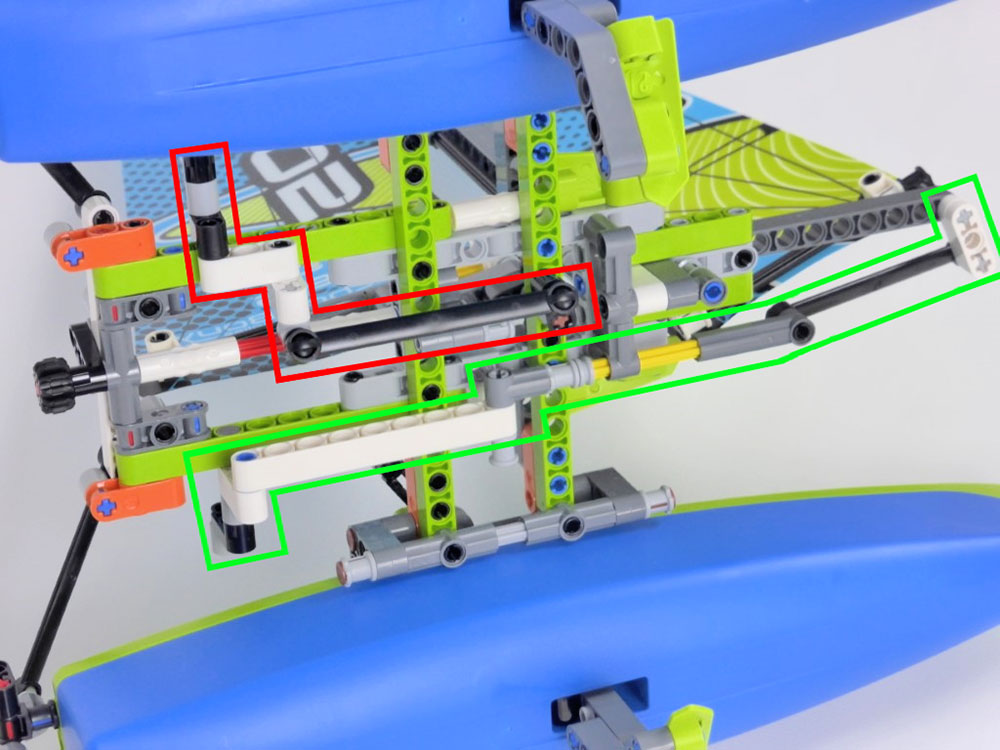
The rudder mechanism has much less friction and you may even want to increase the friction by tightening the parts if you take the boat out to the water.
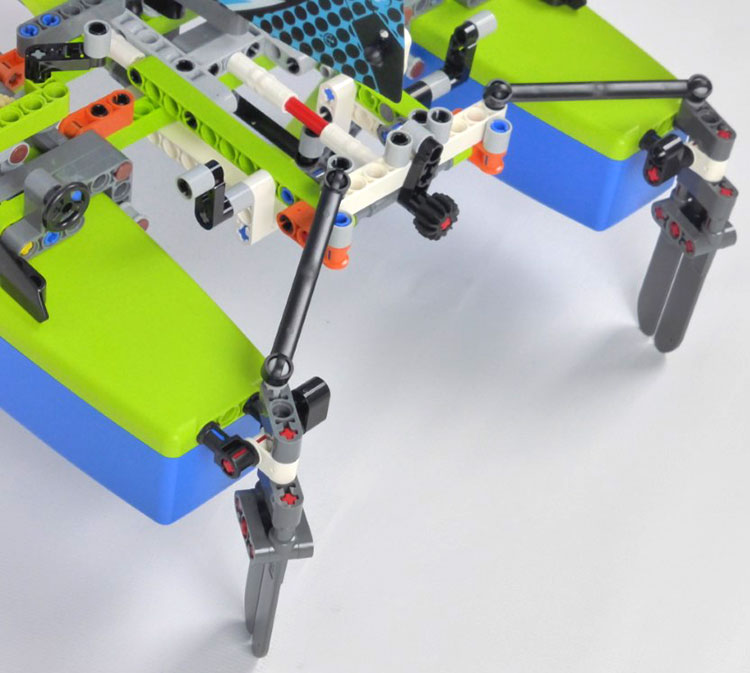
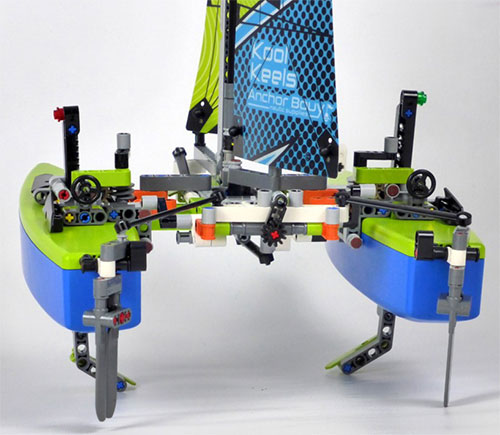

The set brings back childhood memories of building a wooden boat with my grandfather, preparing the rigging and the sails and making it cross the nearby pond. 42105 Catamaran essentially embodies the same promise. Fun building and more fun sailing.
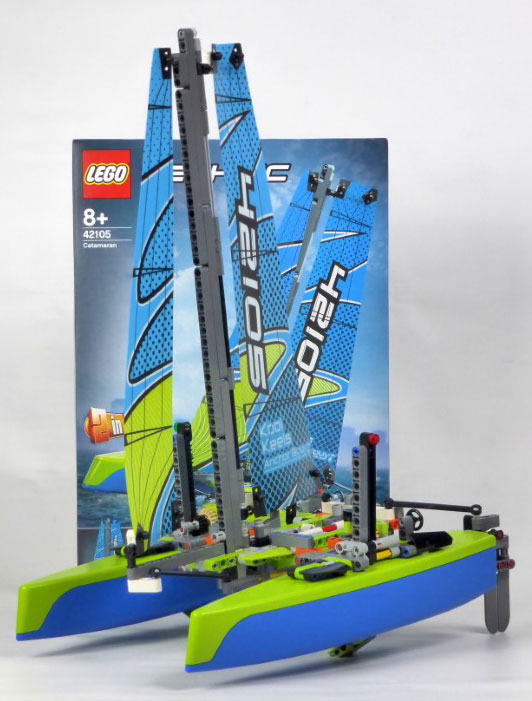
After having some fun with the official model (and possibly building the secondary model when the instructions become available) it will be good fun to motorise the set. Floating hulls means there is now a fully Technic solution for making motorised boats and, who knows, even a programmable version, either with Powered Up or MINDSTORMS.
We wish to thank LEGO for providing this set for review. The opinions in this review are not supported or endorsed by LEGO.
8716